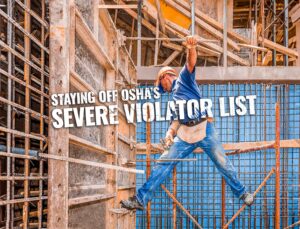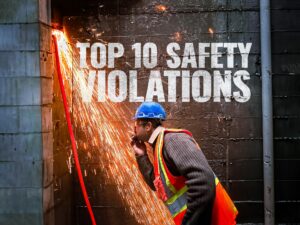Beating the Heat: Safeguarding Workers’ Health and Safety in Rising Temperatures
As temperatures continue to rise, heat-related illnesses have become a growing concern for both workers and employers. Working in extreme heat conditions poses significant risks to the health and safety of employees, making it essential for employers to take proactive measures to prevent heat-related illnesses. In this blog post, we will discuss the importance of heat prevention in the workplace and explore various strategies that employers can implement to ensure their workers’ safety and well-being.
Understanding the Importance of Heat Prevention
Extreme heat can lead to heat-related illnesses such as heat exhaustion and heatstroke, which can be life-threatening if not addressed promptly. Workers exposed to high temperatures for prolonged periods are at a higher risk of dehydration, heat cramps, heat rash, and other heat-related health issues. OSHA has put out the first hazard alert letter on heat illness reminding employers about their legal responsibilities. The Agency is strategically enhancing its enforcement efforts, concentrating on geographic areas and industries where high heat poses a significant risk to vulnerable worker populations. This approach will entail increased inspection activity and a wider utilization of enforcement tools, particularly in situations where workers are exposed to clear and imminent dangers.
1. Providing Cool Water
One of the most crucial aspects of heat prevention is ensuring that workers have access to an abundant supply of cool water. Encouraging employees to drink water frequently helps in preventing dehydration, which is a significant concern during hot weather conditions. Employers should set up hydration stations throughout the worksite, making it convenient for workers to access water regularly.
2. Offering Ample Shade
Creating shaded areas in the workplace allows workers to take breaks from direct exposure to the sun. Whether it’s using canopies, umbrellas, or natural shade from trees, providing rest areas with adequate shade is vital for allowing workers to cool down and recharge during their breaks.
3. Implementing Frequent Breaks
Heat-related illnesses are more likely to occur when employees are exposed to high temperatures for extended periods without sufficient rest. Employers should schedule frequent breaks to give workers time to cool off and recover from the heat. During these breaks, employees can retreat to shaded areas and drink water to maintain their hydration levels.
4. Acclimatization and Training
Acclimatization is a critical process that allows the body to gradually adjust to working in extreme heat conditions. New workers or those returning from extended leaves should undergo a progressive acclimatization program, gradually increasing their work hours in hot conditions. This approach helps minimize the risk of heat-related illnesses. Additionally, employers should provide training on heat prevention, recognition of heat-related symptoms, and appropriate response protocols.
5. Engineering Controls
Employers can implement engineering controls to mitigate heat exposure in the workplace. Examples include installing reflective barriers, using ventilation systems to circulate air, or employing radiant heat barriers. By reducing ambient temperatures, employers can create a safer and more comfortable environment for their workers.
6. Personal Protective Equipment (PPE)
While personal protective equipment is crucial for worker safety, some traditional PPE, such as heavy protective clothing, can exacerbate heat stress. Employers should explore lightweight and breathable options for PPE, which still provide adequate protection without compromising worker comfort.
7. Flexibility in Work Schedules
During extreme heat conditions, employers can consider adjusting work schedules to avoid peak heat hours. Starting work earlier in the morning or later in the evening when temperatures are relatively lower can significantly reduce workers’ heat exposure and associated risks.
8. Monitoring and Supervision
Regular monitoring and supervision of workers are essential to identify early signs of heat-related illnesses. Employers should encourage employees to report any discomfort or symptoms promptly. Having trained supervisors who can recognize the signs of heat stress and provide immediate assistance is crucial for preventing severe health consequences.
As temperatures continue to rise due to climate change, ensuring heat prevention in extreme working conditions has become a top priority for employers. By providing cool water, shade, frequent breaks, acclimatization programs, and implementing engineering controls and appropriate PPE, employers can significantly reduce the risk of heat-related illnesses among their workers. Prioritizing worker safety not only promotes a healthier and more productive workforce but also demonstrates a commitment to the well-being of employees. Together, these heat prevention measures create a safer work environment and foster a positive workplace culture that values the health and safety of every worker. For more information and tips on keeping your workers cool this summer reach out to one of our safety experts.
Recommended Reading
TOP OSHA Citations by Industry
OSHA, or the Occupational Safety and Health Administration, is a government agency that enforces workplace safety regulations in the United States. One of their primary functions is to conduct inspections of workplaces to ensure compliance with these regulations. When violations are found, OSHA can issue citations and penalties. In this blog post, we will explore…
Staying off OSHA’s SVL (Severe Violator List)
Staying off of OSHA’s Severe Violator List is important for any business to maintain a safe work environment and avoid costly penalties. The Severe Violator List (SVL) is a program launched by the Occupational Safety and Health Administration (OSHA) to focus on employers who have committed severe or repeated violations of workplace safety regulations. Being…
Top 10 Safety Violations in Manufacturing
Manufacturing is an industry that requires strict adherence to safety regulations to ensure the health and well-being of employees, as well as the quality of the products produced. Unfortunately, there are still too many safety violations that occur in the manufacturing industry – causing billions of dollars in irreparable and tragic incidents. Here are the…
SAFETY MANAGEMENT SIMPLIFIED
Prevent Tragedy and Scale Effectively by Making Safe Work Efficient




